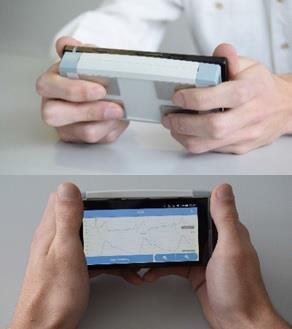NICVA
Noninvasive device for fast cardiovascular condition assessment
Noninvasive device for fast cardiovascular condition assessment (NICVA)
2018 PROD 00092
Cardiovascular diseases (CVD) are a leading cause of deaths worldwide. Early diagnose and periodic monitoring of patients at risk can reduce mortality but current technology provides only partial solutions as extra-hospital devices can measure a limited number of physiological parameters, each of them needing a specific device and a skilled operator. Further, arterial blood pressure (ABP) cannot be continuously measured. A compact, affordable and self-administered device able to measure several cardiovascular signals anywhere there is access to a wireless communication network will be a major breakthrough in medical technology with a sizeable potential market and a major impact in health care as it will facilitate both periodic and continuous monitoring also in hospitals.
We propose NICVA, a medical device able to monitor the performance of the cardiovascular system that relies on two complementary inventions. The first one is the detection of the ECG and an arterial pulse wave (APW) with information proximal to the heart, by using only four dry electrodes, two for each hand or arm, and measuring, in addition to the ECG, changes in the limb-to-limb electrical impedance, the so-called Impedance plethysmogram (IPG). The limb-to-limb impedance depends on the tissues between the electrodes and its basal component is measured in some body composition analyzers. Blood ejection and arterial pulse wave propagation at each heartbeat reduce that impedance and the amplitude of this change along the limb-to-limb path yields the IPG. Since the impedance change starts during cardiac systole, that IPG provides information proximal to the heart. The second invention is the simultaneous detection of bilateral distal APWs using the same four-electrode set and measuring the electrical impedance between the two electrodes in the same limb. The time interval between the R-wave of the ECG and the foot of the limb-to-limb APW is the Pre-Ejection Period (PEP), a good indicator of myocardial contractility. The time interval between the proximal and each distal APW is the (brachial) Pulse Travel Time (PTT), a good indicator of arterial elasticity, which is correlated to ABP. Furthermore, respiratory information is available from the ECG and from the limb-to-limb IPG, as this includes the impedance pneumogram. Therefore, voltages measured with only four electrodes provide a wealth of information about the electrical and mechanical condition of the heart and the mechanical status of the upper thorax’s and arm’s arteries, which is otherwise unavailable, plus respiratory information. The technical simplicity of the measurements involved allow the system to be implemented in standalone handheld devices or in existing handheld devices, such as 1-lead ECG monitors and Body Composition Analyzers.

The aim of this project is to build a portable prototype for a pre-clinical study to obtain ECG lead I, PEP, PTT and ABP changes from four dry electrodes. This involves the following tasks: 1) Improving the current laboratory prototype to simultaneously measure three impedances, two of them very small; 2) Developing algorithms to automatically detect pre-defined fiducial points in the ECG and the three IPG signals obtained in quiet people; 3) Verifying that prototype in a significant group of people with no known cardiovascular disease; and 4) Validating the prototype in selected high risk cohorts such as hypertensive or hypertensive-prone patients.
| Aquest projecte està cofinançat pel Fons Europeu de Desenvolupament Regional (FEDER) de la Unió Europea en el marc del Programa operatiu FEDER de Catalunya 2014-2020. |  |
|---|
Share: